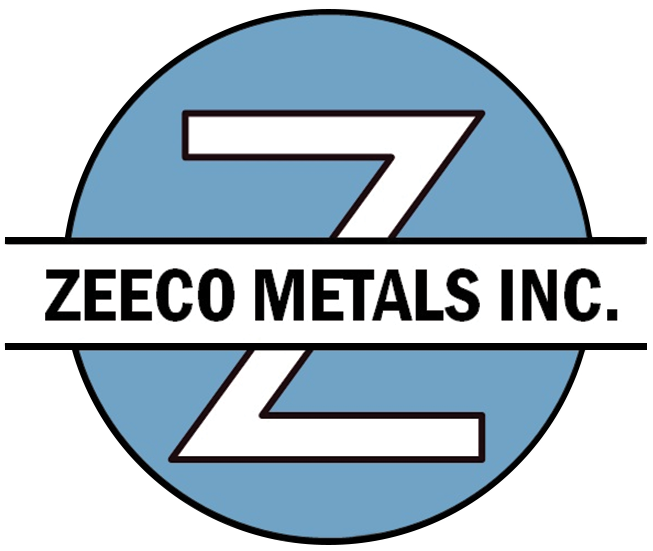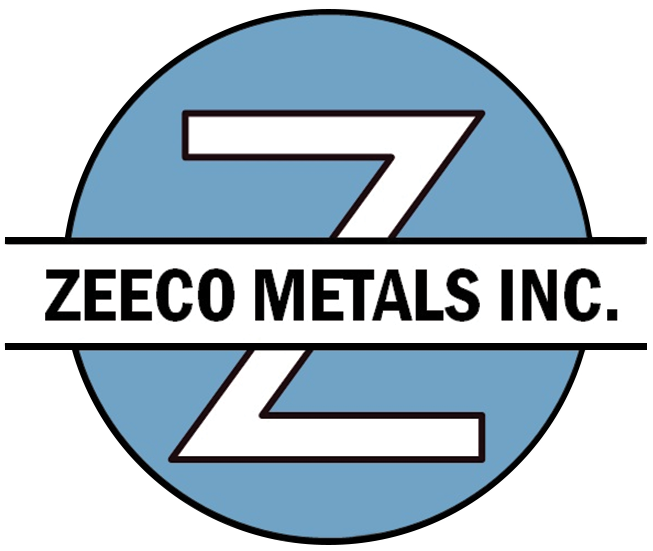
OUR PRODUCTS
Zeeco Metals Product Selection
For nearly 50 years, Zeeco Metals has been providing high-quality flat-rolled carbon steel products at competitive prices and with quick turnarounds. We specialize in the slitting of various flat-rolled carbon steels including hot rolled pickled and oiled, cold rolled, hot dip galvanized, galvannealed, electrogalvanized, and aluminized. Learn more about each type of metal here.
Zeeco Metals provides various types of flat rolled carbon steel. Please see below:
Hot Rolled Pickled and Oiled
Often abbreviated as HRPO, hot rolled pickled and oiled steel is a popular alternative to cold rolled steel. In pickling, the hot rolled steel is processed with an acidic solution that removes elements like rust and scale. The acid is then rinsed away, and the steel is left to dry. After drying, a thin film of oil is applied to prevent corrosion.
Advantages
- Easy painting: HRPO products are easier to paint, given that all stains and rust have been removed. Additionally, the paint will have a more glossy finish and better adhesion, making it more resistant to chipping.
- Improved workability: HRPO steel is easier to bend, form, or stamp and can prolong the life of stamping equipment. Well-lubricated HRPO can create deeper draws.
- Enhanced welding: Given that HRPO has a scale-free surface, it is a great material for welding applications. HRPO products also don’t need to be pre-cleaned due to the layer of oil.
- Easy laser burning: Speed laser burning times decrease by about 15% when using HRPO steel.
- Eliminated blasting costs: HRPO steel eliminates costs associated with blasting, particularly maintenance and cleanup.
Cold Rolled
Cold rolled steel is hot rolled steel that has undergone additional processing. After being hot rolled, the steel is rolled at room temperature, below the recrystallization temperature. The steel is then cleaned of any oxide scale and undergoes more rolling, at room temperature, to achieve the desired thickness.
Advantages
Compared to hot rolled steel products, cold rolled products have superior surface finishes, tolerances, straightness, and concentricity.
- Improved strength: Since rollers compress the steel at room temperature, the final product will be stronger due to strain hardening.
- Enhanced surface finish: Cold rolled steel will have a smoother finish that is less likely to contain imperfections. This makes cold rolled steel better for aesthetic applications, such as infrastructure and architecture.
- Closer tolerances: Cold rolled steel is generally thinner than hot rolled steel without compromising strength. In metalworking, this means cold rolled steel has tighter tolerances.
- Numerous options: There are several types of cold rolled steel, such as quarter-hard, half-hard, and full-hard. Each one provides its own unique advantages.
Disadvantages
The greatest disadvantage to cold rolled steel is its cost. In most cases, it will be more expensive to produce or purchase cold rolled steel compared to hot rolled. Additionally, cold rolled steel requires more force to shape and thus has low malleability.
Hot Dip Galvanized
Hot dip galvanizing (HDG) is a process of coating fabricated steel. It involves submerging the steel in a molten zinc bath. HDG steel undergoes three steps: surface preparation, galvanizing, and inspection.
Thorough surface preparation is important because zinc will not react and bond with unclean steel. Once cleaned, the steel is dipped into a molten bath that is at least 98% zinc. It is lowered into the bath at a specific angle to prevent air pockets that may prevent full immersion. During immersion, the iron in the steel will react with the zinc to create a series of zinc-iron intermetallic layers. The outer layer is made of pure zinc.
Advantages
- Corrosion resistance: HDG steel is the best choice for outdoor construction applications that must withstand harsh environmental conditions. Its corrosion resistance enables the material to offer a service life of 50-100 years.
- Durability: The intermetallic layers formed during the galvanizing process are harder than the base steel. The top zinc layer is ductile and can absorb impacts. Together, the galvanized coating provides excellent abrasion resistance and durability.
- Longevity: HDG steel corrodes at a rate of 1/30 compared to bare steel in the same environment. Based on real-world studies, hot dip galvanized steel can offer over 70 years of service without maintenance, even in industrial applications with corrosive atmospheric conditions.
Galvannealed
Galvannealed steel is galvanized steel that undergoes an additional annealing step. The metal is heated to 1,050 °F, which attracts some of the iron to the outer layers of the steel and results in a zinc-iron alloy coating.
Advantages
- Rust resistance: Galvanealed steel will have even better rust resistance than galvanized steel, especially in salty or damp environments.
- Paintability: Paint can adhere to galvannealed steel so well that primers aren’t needed.
- Appealing surface finish: The metal’s matte gray surface finish may be more attractive than that of galvanized steel.
- Formability: Galvannealed steel is easy to form into complex shapes for various applications.
Disadvantages
- Cost: Because of the additional production step, galvannealed steel is more expensive than galvanized steel.
- Scratches: Galvannealed steel is more prone to scratches than galvanized steel.
Electrogalvanized
Electrogalvanizing is an electroplating technique that induces an electrochemical reaction between zinc salts and steel, resulting in an outer layer of zinc that protects the steel from corrosion. Compared to hot dip galvanized steel, electrogalvanized steel has a thinner coating and a more aesthetically appealing finish.
Advantages
- Consistent coating: Electrogalvanized steel will have a more uniform coating than HDG steel.
- Attractive surface finish: Electrogalvanized steel has a shiny finish that makes it ideal for automotive manufacturing.
Disadvantages
- Short lifespan: Electro galvanized steel has a shorter lifespan, usually months to years.
- Thin coating: The shorter lifespan is in part due to Electro galvanized steel’s thinner coating.
- Limited component size: Given how electrogalvanized steel is manufactured, it is best suited for producing smaller components.
Applications
Electrogalvanized steel is best for small parts, such as screws and tools. This is because smaller components demand a thinner protective layer than HDG steel can provide. Electrogalvanized steel is also preferred where aesthetics are important, such as automotive production. Like other galvanized metals, electrogalvanized steel is used as means of corrosion resistance.
Aluminized
Steels that have been hot dipped in either aluminum-silicon alloys or pure aluminum are aluminized steels. The procedure is called hot-dip aluminizing, which gives the steel better surface properties comparable to the more expensive stainless steel. Aluminized steel combines the corrosion resistance of aluminum with the strength of steel.
Properties
- High-temperature resistance: Aluminized steel is frequently used in ovens, heaters, and burners.
- Low coefficient of thermal expansion: Aluminized steel has a lower thermal expansion coefficient than stainless steel, which means it is less likely to deform in high-heat conditions.
- Corrosion resistance: The aluminum oxide layer that forms during the hot dipping process prevents the base metal from corroding.
- Electrical conductivity: Aluminized steel’s electrical conductivity is about 61% of copper.
- Thermal conductivity: Aluminum conducts heat about four times more than steel and twice as much as brass.
- Low-temperature toughness: Unlike steel, aluminum retains its durability at low temperatures.
- Resilience: Aluminum can absorb sudden impacts and flex under intense loads.
- Reflectivity: Aluminum is more reflective than gold or silver, making it a common application to glass for mirrors.
- Non-magnetic: Aluminum is paramagnetic, meaning it does not become magnetic when subjected to strong magnetic fields.
- Non-sparking: Whether pure or in alloy form, aluminum will not produce sparks.
Advantages
- Corrosion resistance: Aluminized steels are doubly protected from direct chemical attacks and electrochemical action.
- Can be coupled: Unlike stainless steel, aluminized steel won’t succumb to galvanic corrosion when coupled with other metals.
- Lower cost: Aluminized steel is cheaper than stainless steel.
- High-temperature performance: Aluminized steel can perform at temperatures up to 700 °C (1,292 °F).
Applications
Aluminized steel is preferred in applications that involve high temperatures and corrosion. It is a popular choice for incinerators, ovens, and heaters. It is common in kitchen applications—like ranges, barbeque burners, pots, and pans—since the aluminum-silicon coating won’t affect the flavor of food. Aluminized steel is also ideal for HVAC applications and industrial pipes that convey corrosive substances.
High-Quality Flat-Rolled Steel Products
Zeeco Metals provides slitting to hot rolled pickled and oiled, cold rolled, hot dip galvanized, galvannealed, electrogalvanized, and aluminized steel products at competitive prices. All steel types that are slit follow ASTM grades:
- CS (CQ): Commercial Steel
- Types A, B, and C
- DS (DQ) or FS: Drawing Steel or Forming Steel (Coated Products)
- Types A and B
- DDS (DDQ): Deep Drawing Steel
- EDDS (IF): Extra Deep Drawing Steel
- HSLAS: High Strength Low Alloy Steels
- HSLAS Grade 50-80
- HSLAS-F 50-80
- C1006, C1008, C1010
- Half Hard
- Quarter Hard
If you have any questions about our steel slitting capabilities, feel free to contact us today.

